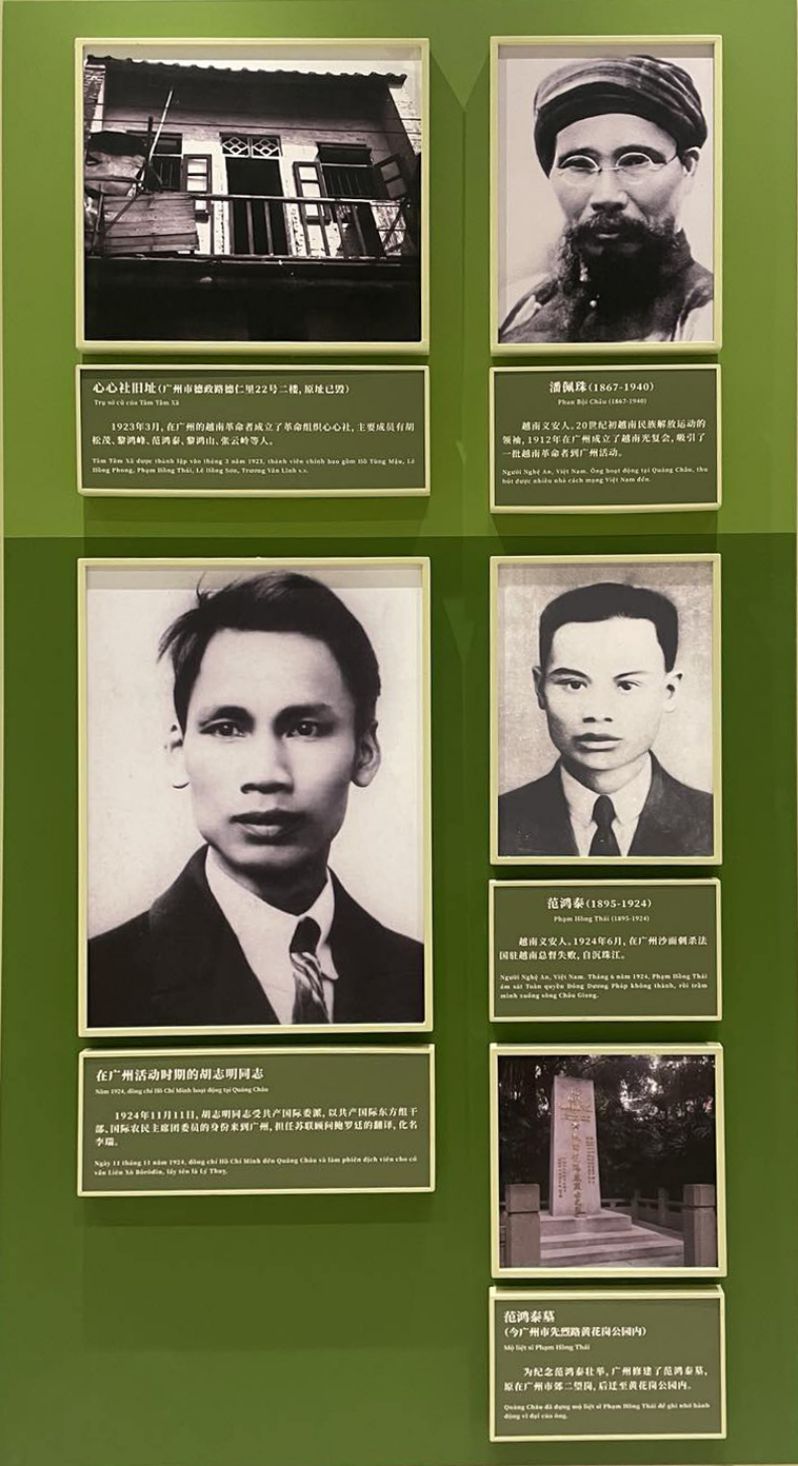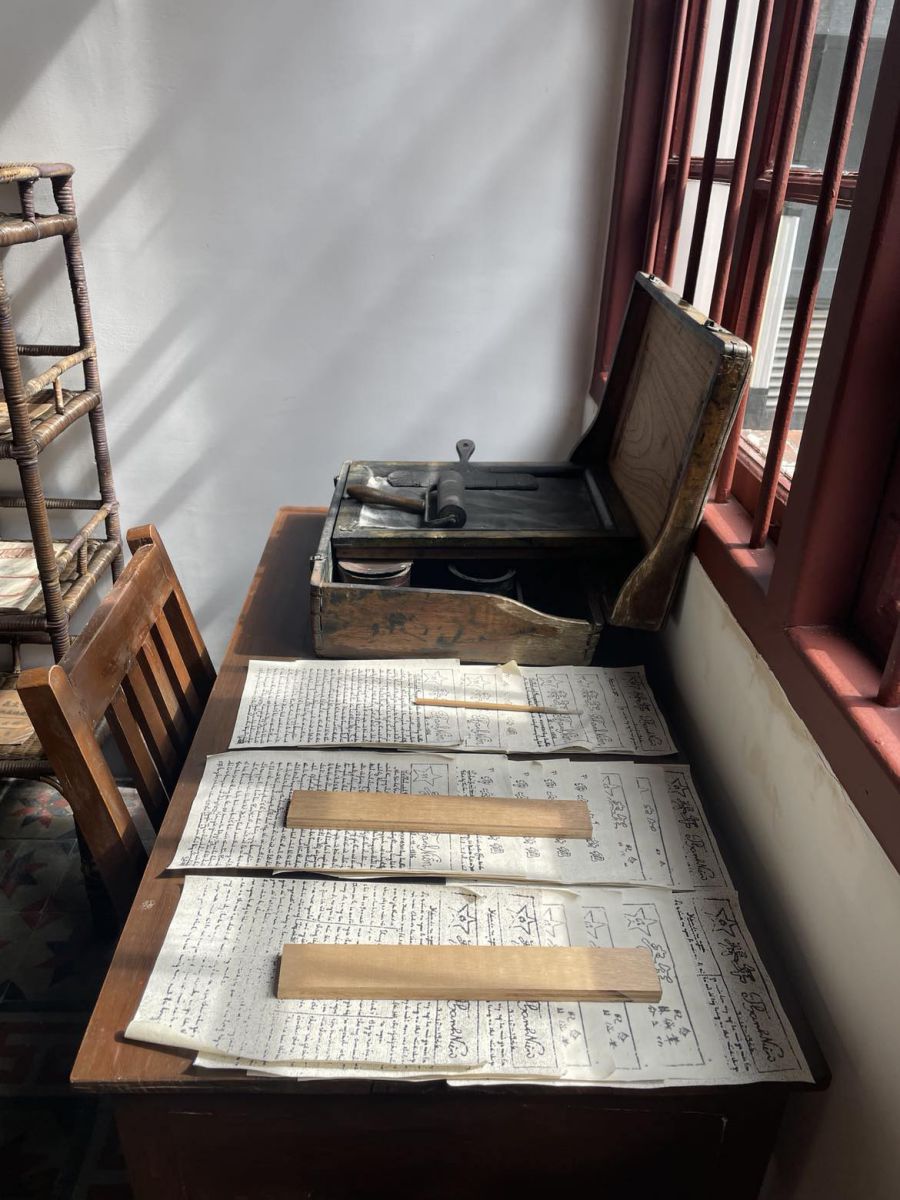These two three-story houses were the place where Nguyen Ai Quoc operated from November24 to May 1927. The house was built in traditional local architecture, with a deep brown wooden frame, a well-standing red brick floor and a small wooden staircase leading to the floors. This historical relic brings visitors a familiar yet emotional space about the quiet and vibrant period of the Revolution.
This is the relic of the Vietnam Revolutionary Association's headquarters. It is the place where Nguyen Ai Quoc used to live, work and sprout for the Vietnamese revolution. From this small house, the first lessons about Marxism - Leninism have been taught, the first patriotic youth classes trained to become the nucleus of a Communist Party with an independent and free ideal for the Vietnamese people.
From November 1924, to May 1927, Nguyen Ai Quoc visited Guangzhou as a member of the Eastern Committee of the Communist International, and a member of the International Presidium of Farmers. Under the pen name Ly Thuy, the Exciting Activist, he translated for the Soviet advisor Borodin and actively built a revolutionary foundation for Vietnam. He met and gathered young intellectuals and patriotic young people of Vietnam.
According to the Ho Chi Minh Museum, Nguyen Ai Quoc opened 3 political training courses to train Vietnamese Revolutionary cadres. The class was held at houses 13 and 13/1 Van Minh Street, now 248 and 250 Van Minh Street ( guangzhou, Guangdong - China).

"Nguyen Ai Quoc directly leads and is the main lecturer of the courses. The person named Vuong. The lecturers in addition to" Comrade Vuong "and Ho Tung Mau, Le Hong Son ... There are also some officials in the Soviet advisory delegation at that time working in China and some officials of the Chinese Communist Party such as Bai Bai (lecturing on agriculture work) ... After each lecture, each other to understand, each other to understand, each other to understand, each of them to understand, each other to understand, each other to understand, each person to understand, each person to understand, each person to understand, each person to understand, each other to understand the group, to re -understand, each other to understand the group, each other to understand, each other to understand the group, each other to understand, each person to understand, each other to understand the group. New article ", excerpted" Uncle Ho "(Literature Publishing House, Hanoi, 1960, p.95).
The class also has "newspapers" posting articles for students, organizing performances of "scripts", cultural activities or visiting historical sites such as Hoang Pho Military School, visiting the tombs of 72 martyrs on Hoang Hoa Cuong Hill, who died in the Tan Hoi Revolution (1911) in China.
Currently, the display area in the relics has an area of 240m², preserving 154 valuable artifacts, vividly reproducing the old spaces such as Nguyen Ai Quoc's bedroom, meeting room of the Association's headquarters, political training classes, newspaper printing rooms "Youth" - the first revolutionary newspaper of Vietnam; and student dormitory. Simple items, vivid images and even his own autographs with articles such as: "Lenin and East", "British rule" ... are preserved intact.
In 1971, the house at 13 Van Minh Street was decided by the People's Republic of China to be preserved as a memorial site for President Ho Chi Minh, named "House of the Vietnam Youth Revolutionary Association".
In 2002, the Quang Chau City Government invested in comprehensive restoration and inauguration of the relic on April 30, 2002, on the occasion of the 112th anniversary of President Ho Chi Minh's birthday. In 2008, the relic welcomed a group of distinguished Vietnamese guests to visit as scheduled.
The relic is under the management of the Guangdong Revolutionary History Museum and has been ranked as a National Historical and Cultural Relic of China. From 2022 to 2023, the relic will be renovated and planned for display, and in March 2024, it will officially open to the public.

After nearly a century, this place has not only been a simple relic site but has become a sacred symbol of the friendship between Vietnam and China. Currently, tourists can visit the relic for free.
Mr. Tran Kien, from Hanoi, had the opportunity to visit this relic during his trip to Quang Chau at the end of 2024. He shared that he intentionally visited the relic of the headquarters of the Vietnam Youth Revolutionary Association in Guangzhou.
"The two houses are very well preserved, on display beautifully, with about 3-4 staff on duty to guide visitors. The documents here are quite complete and detailed. For example, the list of students who have studied here includes names, courses... I think in addition to historical factors, this relic is also a foreign destination. If Vietnamese tourists have the opportunity to visit Guangzhou, this is a place they should visit, Mr. Tran Kien shared.
In the journey to explore Guangzhou - the busiest and most modern city in southern China, a visit to the headquarters of the Vietnam Revolutionary Association of Youth will bring a special experience. It is an opportunity for tourists not only to "watch" but also "feel" and "understand" - about the historical years, when between the foreign land, a patriotic young man lit up the flame of flames to blow the spirit of the Vietnamese revolutionary struggle.











